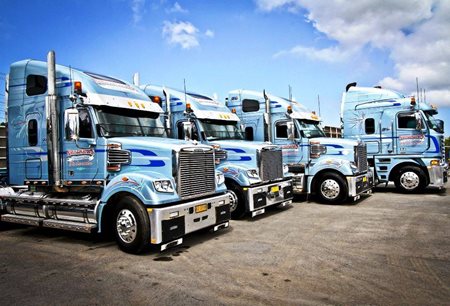If you are an owner-operator with your own authority then a big part of your job is finding the best loads that pay you the highest revenue per day. Establishing a good working relationship with the freight broker is crucial for your success. Below are four tips to help you when working with a freight broker.
Have a clear goal in mind
Every business is different, and the goals for each load are different. Is it more important to earn as much money as possible on this load, or is repositioning your truck for the next load more important?

For example, let's say you run a load from Milwaukee to the East Coast for $2.50/mile. Waiting on the East Coast for another $2.50/ mile load is probably unrealistic. If return loads directly to Milwaukee aren't paying enough, look for alternative routes. My suggestion is that most freight into Wisconsin comes from other points in the Midwest, so any load into the Midwest helps you meet your goal. Discuss the alternatives with your broker. Pick one that loads quickly and pays a higher rate per mile, even if it’s a shorter haul than you might normally take. Often loads traveling 330-375 miles pay almost as well as loads moving 400-500 miles. Time and overhead costs are part of the equation, but if it doesn't penalize you by taking you too far out of route, a series of moves may be better than a simple out and back.
Also Read: Consider Your Revenue Per Day Before Choosing Your Next Load
Know the markets and lanes
When you educate yourself about the market, you improve your chances of reaching a win-win deal with the broker. Learn about the cargo, demand and availability of trucks, and current rates at the origin and destination of the load. You can use trade publications and economic reports for background. For specific rate guidance, the rate tools found in DAT Load Boards, or advanced freight rate tools like DAT RateView provide the best information available. Broad rate trend information is also available in DAT Trendlines.
The freight rates in all DAT products are based on actual transactions, not bids or asking prices. When searching loads, you can see the range of prices reported to DAT for that lane. I recommend shooting for about 20% higher than the peak of the market rate when you start negotiating. The broker can always come down. Not knowing what the peak of the range is or aiming for much more than 20% over means that you're taking a chance on pricing yourself out of that business.
Get the facts
The freight you're hauling also plays a part in the rate. Find out more about the load than just “what it weighs, what it pays.” Is the freight on shrinkwrapped pallets that can be loaded and unloaded easily, or will you have to spend some extra time at the docks? Will you have to help load and unload, or will you need to find lumpers? When is the load available, and when does it need to be delivered? Will weather be an issue? Asking specific questions about the load will give you a better understanding about the freight, and reassure the broker about your ability to handle the job professionally.
What to Do If Things Go Wrong
Don’t delay bad news. If delivery is expected in 30 minutes and you’re still an hour away, let the broker know. That’ll minimize any sort of damage to the relationship you’re trying to build.
Record the facts if there are any problems with the shipper/consignee, but focus on solving the issues. It will help you keep the broker’s confidence, even when things don’t go as planned.
This article was originally featured on DAT.com.